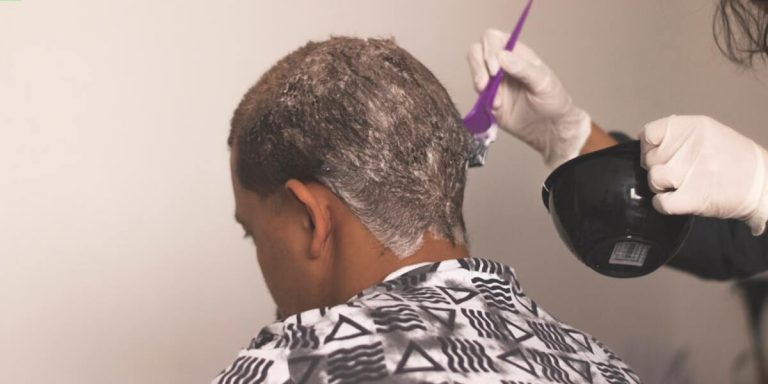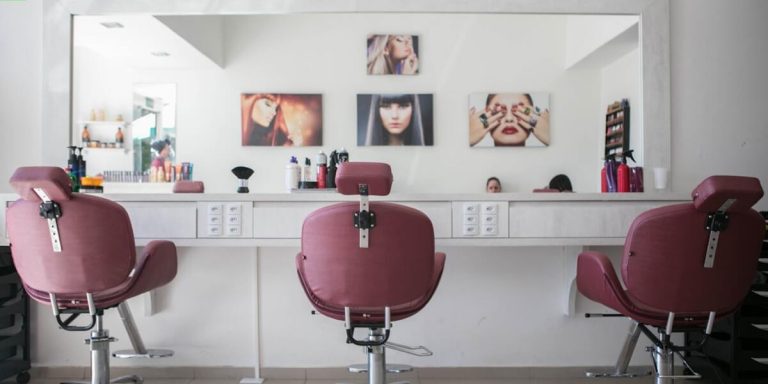Laser Treatment Hair Loss: A Comprehensive Guide to Understanding its Efficacy
Millions of people worldwide are on a constant search for effective solutions to their hair loss problems. Among the plethora of treatments available, laser treatment hair loss is one method that has seen increased interest in recent years due to its scientific approach and promising results.
This guide intends to shed light on what exactly laser treatment for hair loss entails – from how it works, its efficiency levels, potential side effects and costs involved. With so much misinformation floating around online, factual data rooted in medical science becomes incredibly essential before opting for such procedures. Armed with this information you will be better positioned to decide if this could possibly be your answer to tackling stubborn balding issues effectively.
Did you know?
Contrary to popular belief, laser treatment for hair loss doesn’t involve surgical procedures. Instead, it uses low-level light therapy that stimulates epidermal stem cells in the scalp responsible for regrowth of hair follicles.
Understanding Laser Treatment for Hair Loss
Laser treatment for hair loss has skyrocketed in popularity over the last few years, becoming a beacon of hope for those struggling with thinning tresses or bald spots. Positioned at the forefront of technological advancements in 2023, it offers an innovative and non-invasive approach to combat hair loss issues.
The gist behind this cutting-edge solution lies in its procedure called low-level laser therapy (LLLT). The technology uses safe and measured light emissions directed onto your scalp to stimulate blood circulation. Enhanced blood flow revives dormant follicles into an active phase, eventually encouraging them to grow healthy strands again.
As enticing as undergoing laser therapy sounds though, bear one thing in mind – it’s not a quick fix. This process requires patience accompanied by regular treatments before noticeable results start appearing on your crown. However, even with such minor hiccups along the road towards lush locks using LLLT is still largely considered worth every penny invested.
The Science Behind Laser Therapy and Follicle Stimulation
Laser therapy for hair loss, scientifically known as Low-Level Laser Therapy (LLLT), works on a simple yet effective principle. It utilizes the optimal wavelength of light to penetrate scalp tissues and stimulate sluggish or dormant hair follicles.
Firstly, it all comes down to photobiomodulation – an impressive sounding term but essentially means the use of light energy to alter cellular behavior. This process is activated by direct exposure of cells in our body –in this case, those in your hair follicle–to low-level red and near-infrared lights.
Interestingly enough, another mechanism underpinning laser treatments involves bio-stimulation that accelerates cell division within active phase follicles—the place where your new hairs are born! By quickening this replication rate with regular LLLT sessions can mean more voluminous locks over time!
Comparing Low-Level Laser Therapy (LLLT) to Traditional Methods
When considering hair loss treatments, two methods often come to the forefront: traditional therapies and low-level laser therapy (LLLT). Making an informed choice between these requires a detailed comparison. Offering such insights here can assist those who are navigating this critical decision.
Traditional methods of treating hair loss generally involve medications or surgical procedures. Medications like Minoxidil and Finasteride have been popular choices for years now. While effective for many people, they require continuous use and carry potential side effects such as scalp irritation or sexual dysfunction respectively.
Surgical options include hair transplants where healthy follicles from other parts of your body are transferred onto balding areas on your head – a more permanent solution than medications but also invasive with associated risks including infection and scarring in rare cases.
On the flipside, LLLT surfaced around 1967 offering non-invasive interventions through devices emitting cool lasers that stimulate growth factors within cells leading to strengthened roots possibly reversing miniaturization process occurring during typical male pattern baldness stage.
Having no reported adverse effects till date certainly makes LLLT enticing over traditional alternatives partially explaining why it’s gaining momentum today despite being relatively newer entrant into hair regrowth solutions market space.
Evaluating the Effectiveness of Laser Hair Loss Treatments
Laser treatments have emerged as one of the leading strategies in combating hair loss, an issue that affects millions worldwide. As technology continues to evolve rapidly, traditional remedies are continually being phased out by modern solutions such as laser treatment. This non-invasive therapy works by using low-level lasers or light-emitting diodes (LEDs) on the scalp tissue – a scientific approach designed to stimulate blood flow and encourage new hair growth.
Like any promising solution in its early stages, skepticism about its effectiveness is natural. Understanding properly is critical to debunk myths and set realistic expectations for potential users seeking this treatment.
Encouraging results have emerged from many clinical studies involving men and women with pattern baldness. However, it’s crucial to understand that outcomes can vary greatly among individuals. This variation depends on factors like the severity level at the start and individual response rates.
Moreover, we must remember that Laser Hair Loss Treatment is not a quick fix but more so plays part into long-term commitment towards healthier hair density management strategy where consistent application over time often yields better results . In 2023 alone the perception around these treatments has notably shifted positively due their high safety profile combined with gradual yet considerable improvements observed upon regular use.
Analyzing Clinical Studies on Laser Therapy Success Rates
The effectiveness of laser therapy for hair loss has been a subject of extensive research. Numerous clinical studies have shown promising results, making it one of the most sought-after treatments in recent years.
In an analysis done by top dermatologists worldwide, laser therapy had success rates varying from 60% to 95%. The variance is mainly due to individual response and severity levels at the start of treatment. As with any medical procedure, outcomes depend on various factors including age, genetics and adherence to prescribed protocols.
One prominent study involved a group consisting entirely of women suffering from pattern baldness. Post six months into their thrice-weekly laser sessions consistently showed marked improvements compared to their pre-treatment photographs taken under identical conditions with similar lighting elements and positions.
A separate investigation focused more specifically on men going through early stages male patterned hair loss demonstrated significant improvement post-laser treatment as well. In this case too – after following strict regime for nine months – over two-thirds reported sizeable regrowth or cessation in thinning rate thus proving its efficacy yet again.
Another noteworthy experiment took things up another notch- literally! Instead use Low-Level Light Therapy (LLLT) used significantly powerful lasers but reduced exposure time thereby balancing total energy delivery while showing close-to-similar benefits without scaling down safety profile either!
Interestingly enough, though, all trials concur upon certain fundamental premises despite differences.
Real Patient Testimonials and Before-and-After Scenarios
Understanding the effectiveness of a treatment is often best done through real-life examples. The power of patient testimonials, complimented by before-and-after scenarios can be instrumental in determining the true efficacy of laser hair loss treatments.
Satisfied customers offer numerous testimonies as concrete evidence for potential clients considering this method to combat receding hairlines or thinning crowns. Here are some experiences individuals have shared:
Visual proof coupled with verbal assurance is unquestionably convincing. Pictures highlighting visible differences in scalp condition over time are especially impactful tools for evaluation purposes.
One notable instance involves Lisa R., who suffered severe alopecia due to stress-related issues — her pictures showcase definitive improvement post-laser therapy initiation.
The tremendous contrast between Sam B.’s initial and final images depict an astonishingly fuller head six months post-treatment commencement which further underscores the successful impact these therapies offer.
Integrating Laser Treatments into Your Hair Care Routine
In this era of advanced technology, integrating laser treatments into your hair care routine can offer promising results for those dealing with hair loss. Laser treatment leverages the power of low-level light therapy (LLLT) to stimulate follicle growth and curb thinning strands. The process involves focusing beams of light at particular wavelengths onto the scalp, enhancing cell metabolism and promoting a healthier growth cycle.
Notably, laser treatments are non-invasive procedures which makes them a comfortable option for most people experiencing hair loss. With consistent use over time, many individuals observe significant improvement in density and fullness of their tresses. It works by transmitting photon particles into scalp tissues that can heal weakened cells responsible for balding or thinning patches on your head.
Lastly but importantly, blending these high-tech remedies with established routines – like using specialized shampoos or conditioners that augment treatment effectiveness – could potentially escalate desired outcomes faster than anticipated. In conclusion: while the thought may be daunting initially; bringing lasers into your regular grooming regimen indeed presents an innovative solution against an age-old issue –hair loss!
Tailoring a Treatment Plan: Frequency and Duration Considerations
Creating your personalized laser treatment plan is crucial to overcoming hair loss effectively and efficiently. For maximum benefits, two primary factors need special consideration: the frequency of treatments and their duration.
Frequency refers to how often you should undergo these treatments. Experts in this field recommend a standard protocol for starting with bi-weekly sessions during the first month or so. Progressively as your hair responds positively, this can be adjusted down to once per week.
It’s important not just setting but sticking meticulously to this regime ensures optimum follicle stimulation leading improved growth cycles over time.
Here are some quick tips to ensure you make the most of your laser treatment journey:
Maintenance Post-Laser Treatment: Sustaining Results
Laser treatments have emerged as a popular solution for hair loss troubles, helping millions to regain their confidence. However, the journey doesn’t merely end at receiving laser treatment; maintaining your results post-treatment is equally crucial.
The first measure you need to focus on in your maintenance routine is adequate hydration. Consuming sufficient water keeps your scalp hydrated and healthy from within while encouraging new hair growth. Aim for eight glasses of water daily or follow guidelines personalized according to body weight and activity level if possible.
Next comes nutrition – what goes inside will reflect externally too! Enrich your diet with protein-rich foods like eggs, tofu, chicken breast which are known catalysts for growing thicker and healthier hairs post-laser treatment phase. Similarly incorporating vitamin E (avocadoes) , omega 3 fatty acids (flax seeds), Iron (spinach) can work wonders towards sustaining the achieved gains after undergoing laser treatments.
Regularly oiling and massaging provides an additional boost by stimulating blood circulation around the scalp region thus promoting further follicular health improvement – consider oils such as jojoba oil or coconut oil renowned for nourishing properties they possess enhancing overall quality even more effectively than before!
Conclusion
In conclusion, laser treatment hair loss therapies provide a promising and effective solution to the widespread issue of hair loss. The science behind this high-tech approach is captivating and its proven results cannot be ignored. However, it’s crucial to remember that what works for one may not work for another – our bodies are as unique as our personalities.
Don’t let your receding hairline or thinning locks steal your confidence! Dive deep into more innovative ways of combating hair loss on our website where we continually update information about different “Hair Loss Treatments”. Stay informed and keep exploring until you find the perfect fit for you because everyone deserves good health…and great hair!







